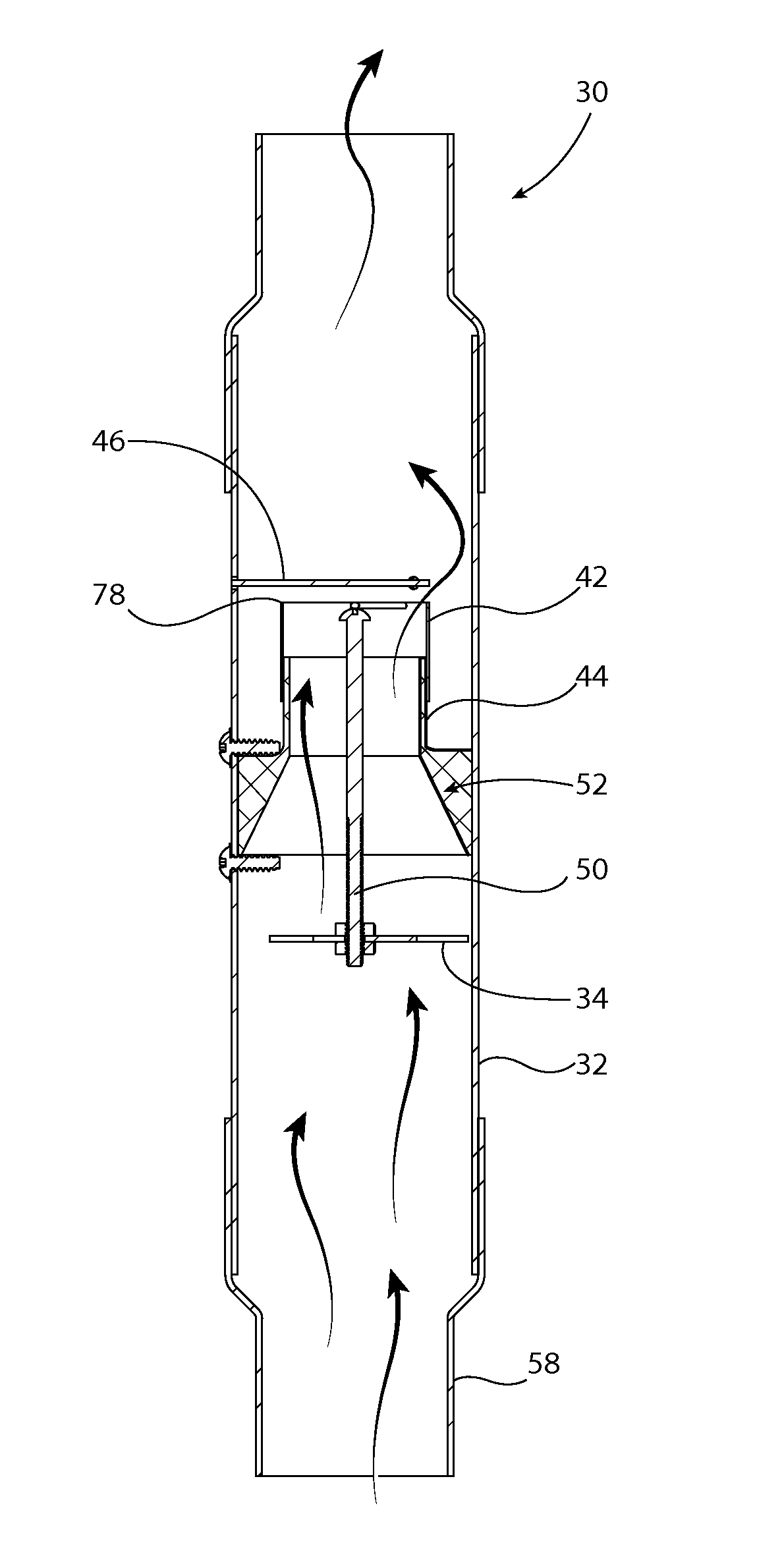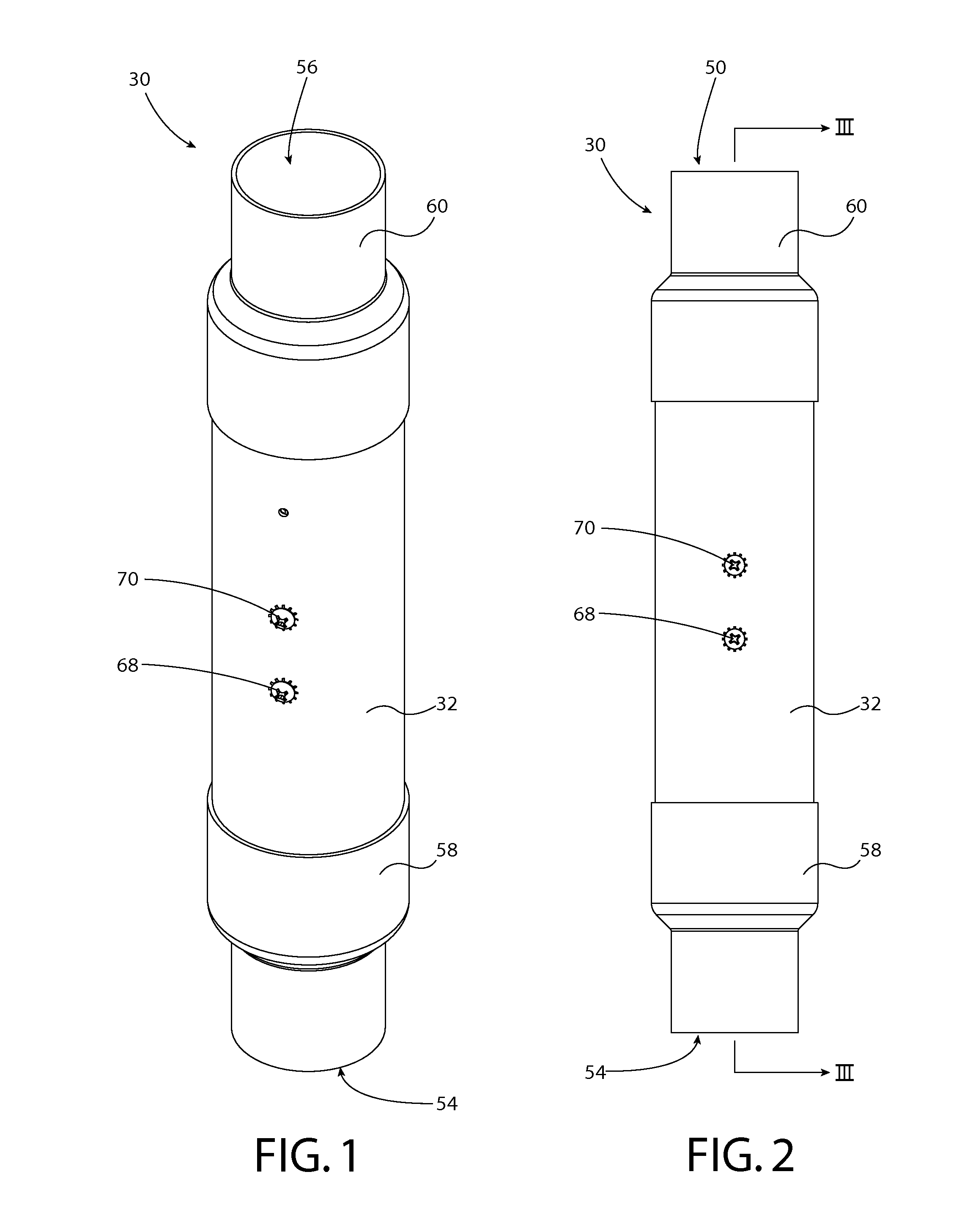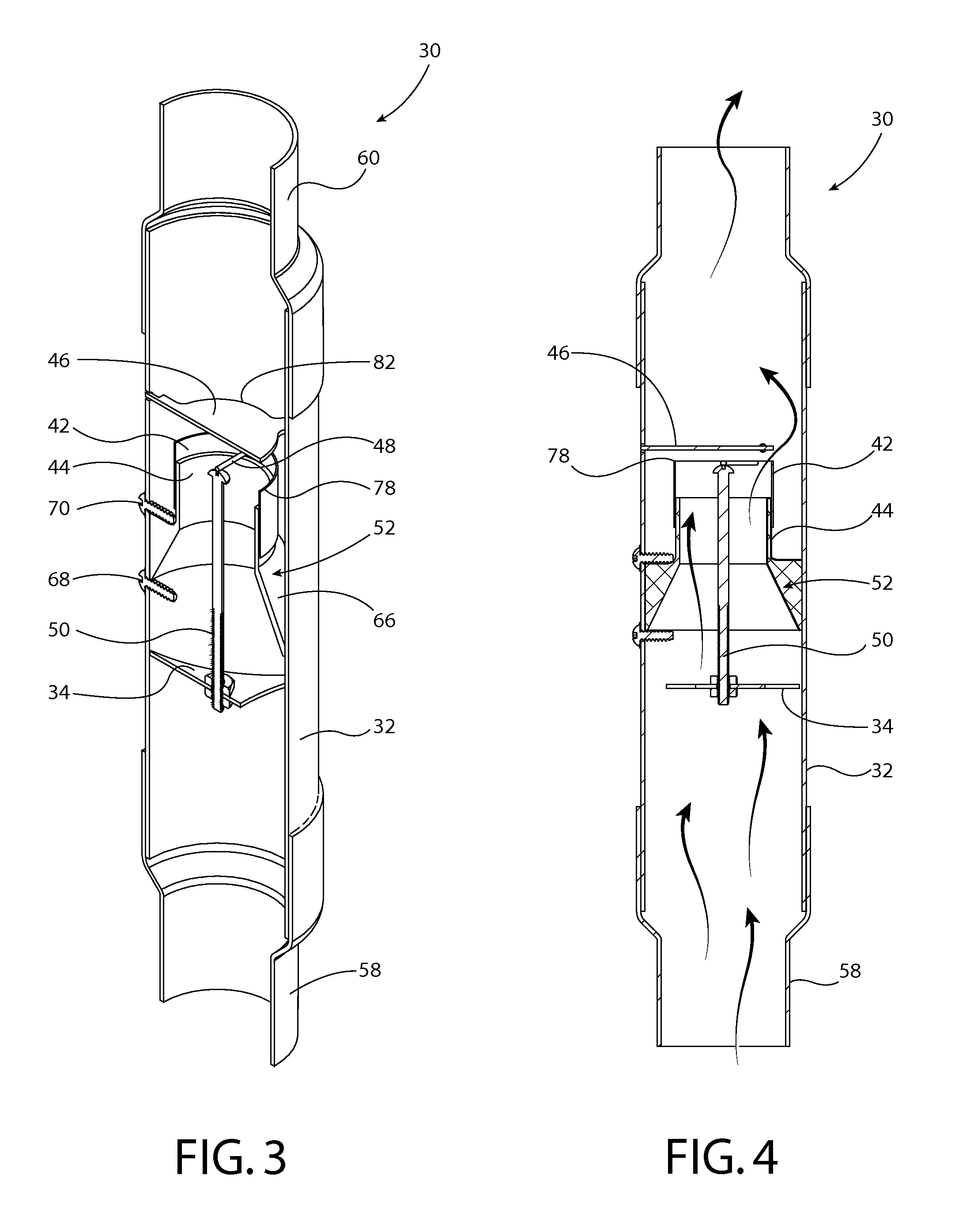Air flow regulator
a technology of air flow regulator and air flow, which is applied in the field of plastic article manufacture, can solve the problems of high cost, large rush of air under atmospheric pressure, and substantial movement of materials, and achieve the effect of facilitating the expansion of the pneumatic plastic resin pellet conveying system and reducing the cost of those systems
- Summary
- Abstract
- Description
- Claims
- Application Information
AI Technical Summary
Benefits of technology
Problems solved by technology
Method used
Image
Examples
Embodiment Construction
[0052]Referring to the drawings in general and to FIG. 1 in particular, air flow limiter 30 is preferably in the general form of a vertically oriented tube, preferably having inlet and outlet ends 54, 56 respectively. The tubular character of air flow limiter 30 is apparent from FIGS. 1 through 6, where air flow limiter 30 preferably includes a vertically oriented exterior tube 32, with open-end caps 58, 60 defining and providing open inlet and outlet ends 54, 56 respectively. End caps 58, 60 are open, of generally cylindrical configuration, and are configured to fit closely about vertically oriented tube 32 so as to provide a substantially air tight fit between end caps 54, 56 and tube 32.
[0053]As illustrated in FIG. 3, air flow limiter 30 preferably includes, within vertically oriented exterior tube 32, a horizontally positioned plate 46, which is oriented perpendicularly to the axis of tube 32. Plate 46 is preferably configured as a circular disk of lesser diameter than the inner...
PUM
 Login to View More
Login to View More Abstract
Description
Claims
Application Information
 Login to View More
Login to View More - R&D
- Intellectual Property
- Life Sciences
- Materials
- Tech Scout
- Unparalleled Data Quality
- Higher Quality Content
- 60% Fewer Hallucinations
Browse by: Latest US Patents, China's latest patents, Technical Efficacy Thesaurus, Application Domain, Technology Topic, Popular Technical Reports.
© 2025 PatSnap. All rights reserved.Legal|Privacy policy|Modern Slavery Act Transparency Statement|Sitemap|About US| Contact US: help@patsnap.com



